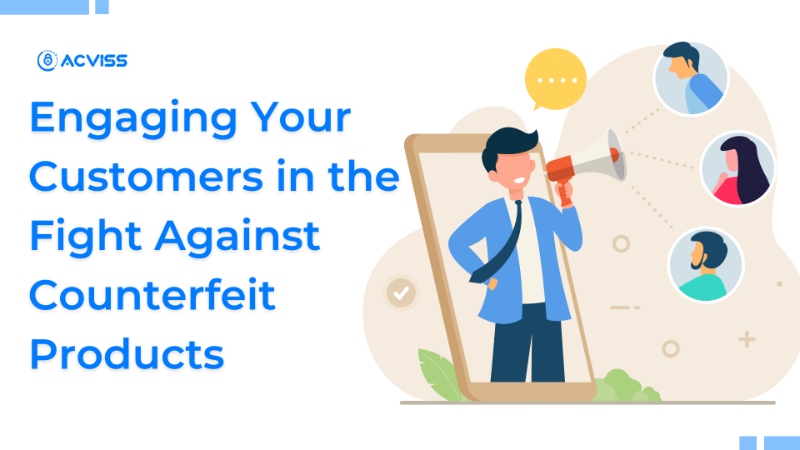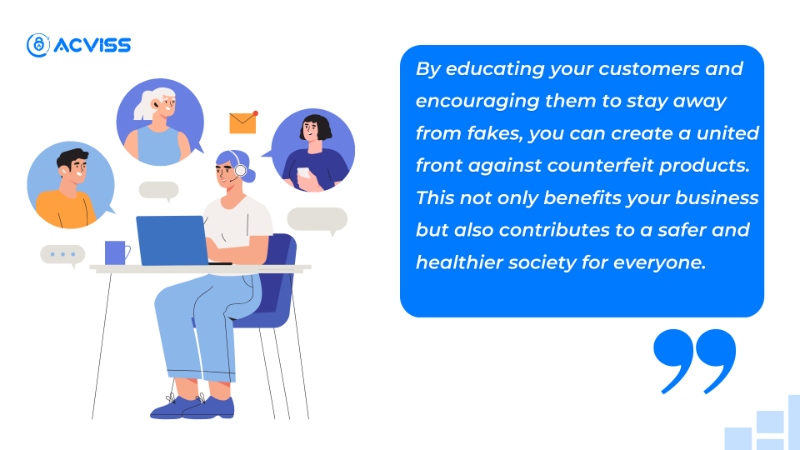Engage Your Customers to Fight Against Counterfeit Products

Counterfeit products have become a major issue that affects consumers, businesses, and governments worldwide. The problem has been around for years, and it continues to grow, with a global estimated value of around $4 trillion. Counterfeit products can range from fashion and luxury goods to pharmaceuticals and electronics and their proliferation poses significant dangers to consumers and legitimate businesses.
The fight against counterfeit products is an ongoing one, and it requires the efforts of everyone, including businesses and consumers. And the customers play a critical role in it. They are the first line of defence against counterfeit products and can help reduce their proliferation. Why? Because consumers can:
Identify counterfeit products
Customers are in the best position to identify fake products since they are the ones who use them. They can recognize differences in packaging, product quality, and branding that may indicate the product is counterfeit. Customers can also notice differences in pricing, which can be a warning sign of counterfeit products.
Report suspected counterfeit products
Customers can report suspected counterfeit products to the brand owner or authorities, which can help reduce their proliferation. By doing so, they can help protect other consumers from the dangers of counterfeit products and help prevent revenue losses for legitimate businesses.
Refuse to purchase counterfeit products
Customers can refuse to purchase counterfeit products, which can help reduce their sales and distribution. This can have a significant impact on the revenue of counterfeiters and discourage them from continuing to produce counterfeit products.
Spread awareness about counterfeit products
Customers can help spread awareness about the dangers of counterfeit products by sharing information with their families, friends, and social networks. By doing so, they can help educate more people about the risks associated with counterfeit products and encourage them to be more vigilant when purchasing products.
The Impact of Counterfeit Products on Consumers and Businesses
Counterfeit products pose significant dangers to consumers and legitimate businesses. For consumers, counterfeit products can be harmful and potentially lethal. They can contain dangerous substances, such as lead or mercury, which can cause severe health problems. Counterfeit products can also have inferior quality, not meet the required standards, and cause harm to the users.
For businesses, counterfeit products can result in revenue losses, damage to brand reputation, and even legal action. According to the Organization for Economic Cooperation and Development (OECD), the estimated value of imported counterfeit products in 2022 was $600 billion. This means that legitimate businesses lose billions of dollars in revenue every year due to counterfeit products.
Engaging Your Customers in the Fight Against Counterfeit Products
Educate your customers about counterfeit products
One of the most effective ways to engage your customers is by educating them about counterfeit products. You can do this by creating informative content on your website or social media platforms. This content can include the dangers of counterfeit products, how to identify them, and what to do if they suspect they have purchased a counterfeit product.
In a study by the International Trademark Association (INTA), 70% of consumers said they would stop purchasing a brand if they found out that the brand that is unwilling to adopt anti-counterfeiting technologies and showed more interest towards brands which tried to make their customers feel safe. This shows that educating your customers about counterfeit products can have a significant impact on your brand's reputation.
Encourage your customers to report suspected counterfeit products
You can do this by providing a platform for customers to report suspected counterfeit products, such as a hotline or an email address. According to a study by the European Union Intellectual Property Office (EUIPO), 51% of consumers said they would report a suspected counterfeit product to the brand owner or authorities. By providing a platform for customers to report suspected counterfeit products, you are empowering them to take action against counterfeit products.
Use anti-counterfeiting technologies
Anti-counterfeiting technologies can help customers identify genuine products and distinguish them from counterfeit ones. For example, companies can use proprietary labels, QR codes or holograms on their products, which customers can scan to verify the product's authenticity. A study by the OECD suggests that 59% of consumers said they would be willing to pay more for a product that has anti-counterfeiting technologies.
Collaborate with other businesses and government agencies
By working together, you can share information and resources and create a united front against counterfeit products. Businesses can collaborate with government agencies to conduct raids on counterfeit product manufacturers and distributors. They can also work together to create public awareness campaigns to educate consumers about the dangers of counterfeit products.

The Benefits
Engaging your customers in the fight against counterfeit products has several benefits. First, it can help protect your brand's reputation by reducing the sale of counterfeit products associated with your brand. Second, it can help protect your customers from the dangers of counterfeit products, which can result in legal and financial liabilities for your business. Finally, it can help reduce revenue losses due to counterfeit products, which can have a significant impact on your bottom line. Engaging your customers in the fight against counterfeit products is critical to protecting your business and your customers. By educating your customers and encouraging them to stay away from fakes, you can create a united front against counterfeit products. This not only benefits your business but also contributes to a safer and healthier society for everyone.